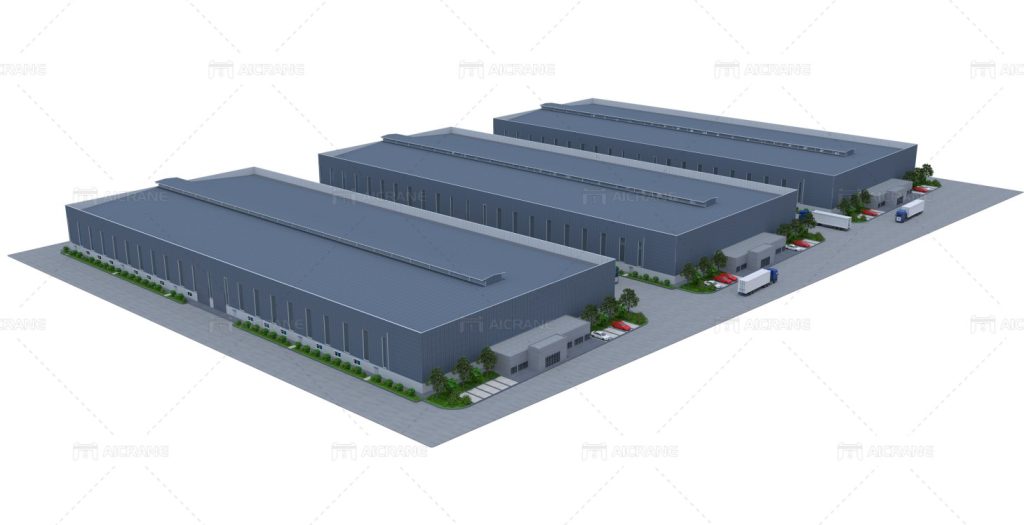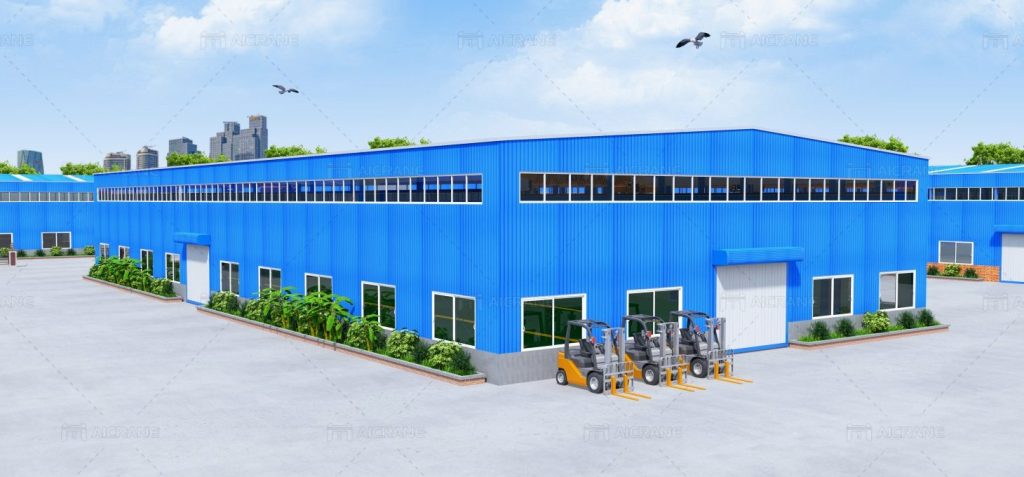Steel structure factory buildings have become a cornerstone in modern industrial construction due to their remarkable durability, adaptability, and cost-effectiveness. These buildings are engineered to withstand harsh environmental conditions, offer exceptional load-bearing capabilities, and provide a sustainable option for industrial infrastructure. This article explores the long-term benefits and durability of steel structure factory buildings, emphasizing why they are a preferred choice for industrial applications.

The Core Strength of Steel Structures
1. Material Properties
Steel is renowned for its high tensile strength and durability. Unlike traditional construction materials such as wood or concrete, steel can endure significant stress and strain without compromising structural integrity. This makes steel an ideal material for factory buildings that must support heavy machinery, equipment, and dynamic loads.
- High Tensile Strength: Steel’s ability to withstand tensile (stretching) forces is crucial in industrial applications where heavy loads and dynamic forces are common.
- Resistance to Deformation: Steel structures maintain their shape and strength even under severe conditions, ensuring long-term stability and safety.
2. Corrosion Resistance
Modern steel used in factory buildings is often treated with protective coatings and galvanization to enhance its resistance to corrosion. This treatment is especially vital in environments exposed to moisture, chemicals, or other corrosive elements.
- Galvanization: Coating steel with a layer of zinc protects it from rust and corrosion, significantly extending its lifespan.
- Protective Coatings: Advanced coatings provide additional barriers against environmental factors, ensuring the steel structure remains intact and functional over time.
Design and Construction Advantages
1. Prefabrication and Modular Construction
Steel structure factory buildings benefit from prefabrication and modular construction techniques. These methods involve manufacturing components off-site under controlled conditions, which are then assembled on-site.
- Precision Manufacturing: Prefabricated steel structure components are produced with high precision, ensuring a perfect fit during assembly. This reduces construction time and minimizes errors.
- Quality Control: Off-site manufacturing allows for stringent quality control, ensuring each component meets the required standards for strength and durability.
2. Flexible and Expandable Designs
One of the significant advantages of steel structure factory buildings is their flexibility in design and scalability. These buildings can be easily modified or expanded to accommodate changing operational needs without compromising structural integrity.
- Modular Design: The modular nature of steel strcuture construction allows for easy expansion by adding additional sections as needed.
- Customization: Steel structures can be customized to meet specific requirements, including varying heights, spans, and load capacities.

Longevity and Low Maintenance
1. Extended Lifespan
Steel structure factory buildings are designed for longevity. With proper maintenance, these buildings can last several decades, providing a reliable and durable solution for industrial operations.
- Durable Construction: The inherent strength and resistance of steel contribute to the extended lifespan of these structures.
- Weather Resistance: Steel buildings can withstand extreme weather conditions, including heavy snow, strong winds, and seismic activities, without significant damage.
2. Minimal Maintenance Requirements
Steel structures require minimal maintenance compared to traditional buildings. Regular inspections and minor upkeep are usually sufficient to keep the structure in optimal condition.
- Ease of Inspection: Steel structures are straightforward to inspect, allowing for early detection and correction of potential issues.
- Cost-Effective Maintenance: Maintenance tasks, such as repainting or replacing protective coatings, are relatively inexpensive and can be performed without extensive downtime.
Aicrane is professional and experienced in designing and manufacturing steel structures to suit different requirements. To know more detailed information, you are welcomed to check this now https://aicranemachine.com/.
Environmental and Economic Benefits
1. Sustainability
Steel is a highly sustainable construction material. It is 100% recyclable, and the recycling process does not degrade its quality, making steel an eco-friendly choice for factory buildings.
- Recyclability: Steel can be recycled indefinitely, reducing the environmental impact of construction and demolition.
- Energy Efficiency: Steel buildings can be designed to be energy-efficient, incorporating insulation and energy-saving technologies to reduce operational costs.
2. Cost-Effectiveness
The long-term economic benefits of steel structure factory buildings are significant. While the initial investment may be higher than some traditional construction methods, the reduced maintenance costs, extended lifespan, and energy efficiency result in substantial savings over time.
- Reduced Construction Time: Prefabrication and modular construction techniques shorten the construction timeline, reducing labor costs and accelerating project completion.
- Operational Savings: Energy-efficient designs and minimal maintenance requirements contribute to lower operational expenses, enhancing the overall return on investment.
The durability and long-term benefits of steel structure factory buildings make them an ideal choice for modern industrial applications. Their high tensile strength, corrosion resistance, and adaptability to various environmental conditions ensure that these structures remain reliable and efficient for decades. Additionally, the economic and environmental advantages, such as reduced maintenance costs, sustainability, and cost-effectiveness, further underscore the value of investing in steel structure factory buildings. As industries continue to evolve and demand more robust and flexible infrastructure, steel structures will undoubtedly play a pivotal role in shaping the future of industrial construction.